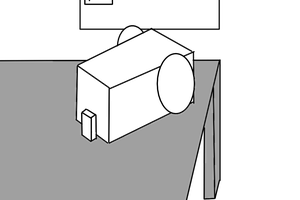It's one of those ooooooold projects, stuck in the back of my mind, that had to be presented here. I think I was considering such a hack before Y2K.
I've always felt that MIDI is a lousy system, great in the 80s but we're in 2016 damnit.
More than 10 years ago, I found a PK13 pedal that I wanted to re-fit with analog sensors but couldn't figure the best sensor. I played with optical but I had too many problems. But now, I'm much more experienced.
2 years ago I found a RD1000 for almost nothing... All I needed : heavy touch, very hackable, but damn it's so heavy and large !!!
It's not a high-priority project but I will not give up :-P
My rough calculations showed that the bandwidth is almost equivalent to an audio CD so the TOSLINK digital interface is perfect for transmission. Raw data must be sent first to a touch processor that filters the data stream. Then commands and parameters are fed to a bank of oscillators. Nice DSP project...... FPGA will be handy :-P
 Yann Guidon / YGDES
Yann Guidon / YGDES


 minifig404
minifig404
 staticdet5
staticdet5
 tiefpunkt
tiefpunkt
 Lutetium
Lutetium